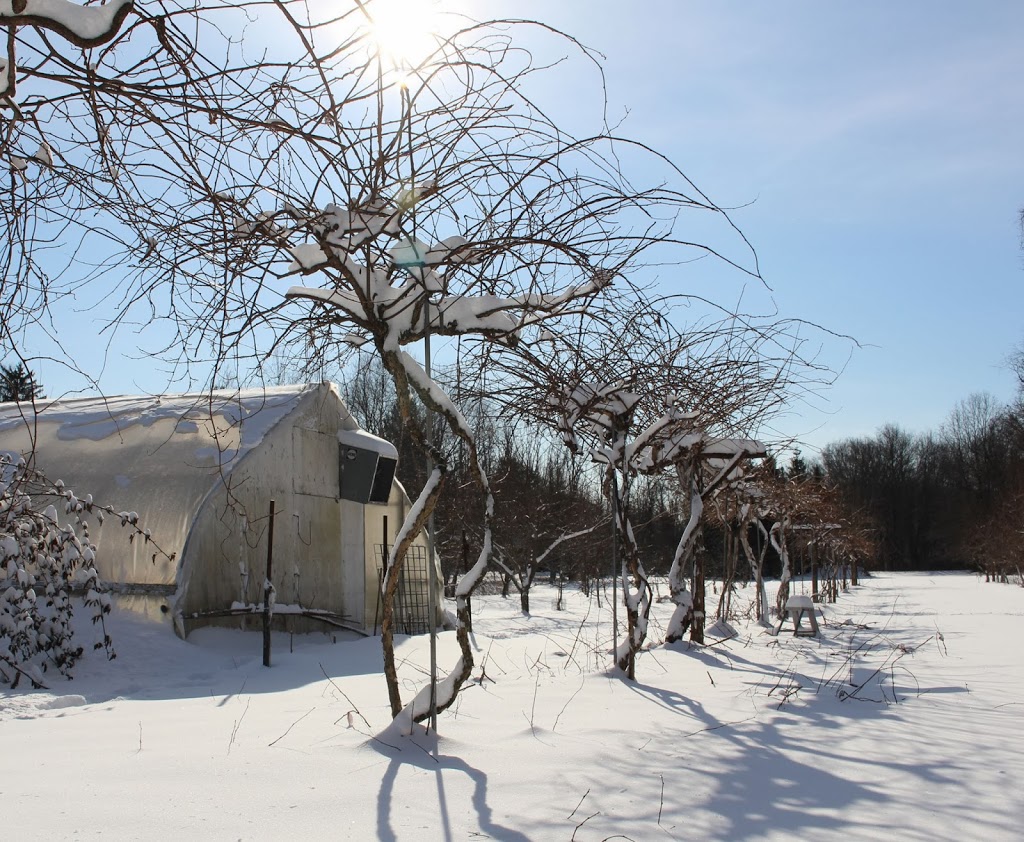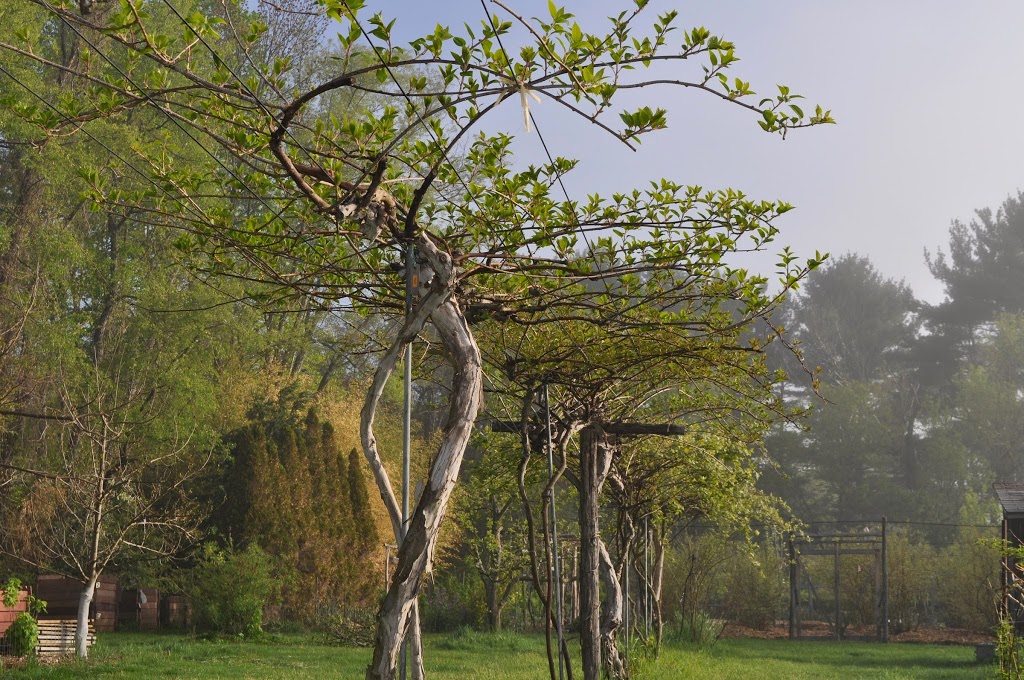Last week I wrote that, what with the cold weather and low-hanging sun showing its face but briefly each day, there’s little for a gardener to do now. That proved not strictly true. Soon after I wrote those words, I received a holiday card from David Jackson and Holly Laubach of Kiwi Berry Organics, growers of what I can attest to are, as it said on the card, the “World’s Sweetest Kiwi.” Theirs are hardy kiwifruits, the small, cold-hardy cousins of the fuzzy kiwis you usually see in the market; with their smooth skins, you pop them into your mouth like grapes.
Most importantly, David and Holly’s card sported a photo, a snowy scene of their kiwi plants pruned to perfection, the fruiting canes all neatly arching over with their ends tied down to their supporting wires. To
 |
| David and Holly’s kiwis |
me, the scene was both beautiful and inspirational. Acting on inspiration, I headed outdoors, pruners in hand, to get to work on my own kiwi vines.
In past years, I delayed all pruning until after the coldest part of winter. Accepted wisdom is that later pruning reduces chances for winter injury. Last year, David told me he started pruning his vines in autumn after leaves dropped. I followed suit warily with one or two vines and they came through winter unscathed. Perhaps it’s our warmer winters of late, perhaps damage that occurs depends on the plant species, or perhaps the accepted wisdom is wrong. At any rate, I’m now pruning with abandon.
————————————————————–
Staring at the tangle of stems on my kiwi plants could have quelled my enthusiasm had I not been presented with this sight in years past. Kiwis are rampant vines, each year sending out masses of vigorous (as long as 15 feet!) that twisting stems that are hard, at first, to make sense out of. Pruning is a must to
 |
| My kiwis, before pruning |
keep the vines manageable and easy to harvest, bathed in sunlight for high quality fruit, and to stimulate an annual flush of new wood. Fruits are borne only near the bases of new shoots growing off one-year-old canes.
My plants, like David’s, are trained on a T-trellis about 6 feet high with 5 parallel wires running from T to T. Each trunk rises to the height of the T and then has been trained to spread into two permanent arms, one growing in either direction along the middle wire. The one-year-old canes, off which fruit is borne, grow perpendicularly to the permanent arms, their ends tied down to the two outermost wires.
————————————————————-
My pruning begins with three easy steps. I cut away any shoots poking up from ground level or out along the trunks below the level of the wires. I shorten all fruiting canes a foot or so beyond the outside wires. And I cut the permanent arms back to where they began growth so that adjacent vines don’t grow into each other.
Then things get more complicated. Too many fruiting canes sprout each year from the permanent arms
 |
My kiwis, last spring, after pruning
(except final shortening) |
and from along canes that were left for last year’s fruits. The goal is to remove enough so that those that remain are spaced a foot apart on either side of the permanent arms, favoring those that are pencil-thick and originating either from the permanent arm or near the base of a last or previous year’s cane.
Finally, pruning becomes easy again. All remaining fruiting canes get shortened to 2 feet long and then tied them down to the wires, hopefully as neatly as on Dave’s and Holly’s vines. I will delay these last steps until later in spring.
————————————————————–
I realize that not many people grow hardy kiwi vines. You all should: The vines are ornamental (they were brought here and for decades grown strictly as ornamental vines), and the fruits are
delectable and free of pest problems. Even if you don’t grow hardy kiwi vines, though, the above pruning technique could be useful to you. It can be applied, with slight modification, to grapes, which a lot of people do grow.
The only differences with pruning grapes is that the fruiting arms can be spaced somewhat closer along the permanent arm, 6 to 12 inches apart, and each fruiting arm needs to be shortened to only a couple of buds long, at which point they take on a new name, “fruiting spurs” rather than “fruiting arms.”
Whether for grapes or for hardy kiwi vines, training to a T trellis and annual pruning presents me, in late summer on into fall, with “ceilings” of delicious berries splayed out and ready for easy harvest.





